Lucas May 17F Creates Pottery Unique as His Fingerprints
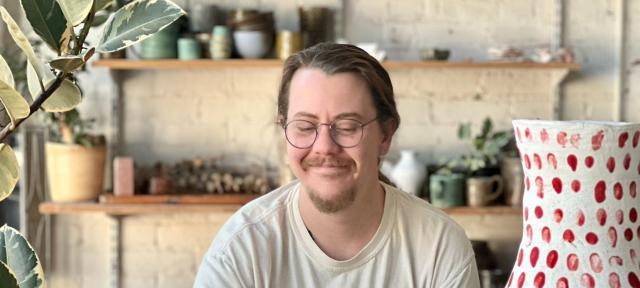
Ceramicist Lucas May 17F creates functional and decorative pieces ranging from coffee mugs to giant vases. He has a studio in Florence, Massachusetts, and sells his pottery at Pinch in downtown Northampton.
We talked with him about his experience as a student, interning with an alum, and launching his own distinctive line of wares.
What drew you to Hampshire?
I was drawn to Hampshire because it felt different, in that it was a place that truly cared about my education. After doing a campus tour and meeting some faculty, I knew it was the right school for me. One of the best pieces of advice I received when looking at schools was to go where the professors’ work excites you; find someone you want to learn from.
What did you plan to study? Did that change while you were here?
I transferred to Hampshire from a community college where I had been studying photography and ceramics. I had intended to continue to focus on those subjects, but I was encouraged to take a physics course, and it greatly influenced the rest of my studies. The intersection of art and science is where I found myself constantly curious.
My Div III was a combination of photographic prints and functional ceramic works. I created a series of carbon transfer prints and ceramic vessels, both made with wood ash from trees I sourced on campus. I was interested in (and still am) the changes in micro-environments and sourcing local materials for my art.
You interned for three years with another Hampshire alum, a fine ceramic artist — tell us about that.
My apprenticeship with Maya Machin 98F started as my time at Hampshire came to a close. It felt like an effortless transition. I wanted to continue my ceramic education and learn more about the wood-firing process. Maya is an amazing artist and a wonderful educator. She’s patient, and generous with her time and knowledge. It was a transformative experience for me and helped shape the way I currently practice my art.
"I was drawn to Hampshire because it felt different, in that it was a place that truly cared about my education."
Did that lead into the work you’re doing now? How did you get started with your own business?
Yes, my apprenticeship was formative in getting to where I am now. My mentors, especially Maya, have been supportive and helpful in providing a blueprint for making a career as an artist. I’ve been fortunate to meet an amazing network of artists here in western Massachusetts.
What inspires you?
I like the concept of slowing down, which is why I’m drawn to large-format photography and wood-fired ceramics — things that are slow and hands-on. It feels radical today, when everything is so fast and manufactured.
I’m also inspired by nature — the endless colors and textures — touch, moments of connection, historical artifacts, bricks.
How are your pieces made?
I use a combination of wheel-throwing and hand-building techniques. I typically work with a variety of stoneware clay bodies, and prefer a clay with some grog and tooth to it.
With my wood-fired work, the atmosphere in the kiln does most of the surface design. There’s wood ash and salt vapor deposited on each pot in a one-of-a-kind way. With my electric-fired work, there’s a loss of that atmosphere. At first, this was kind of jarring, but I’m taking advantage of what the lower temperature and different atmosphere can do: for example, I can get much brighter colors.
The dots are my fingerprints, each individually applied. Larger pieces will have hundreds of them and the process becomes quite meditative. They’re very literally about touch.
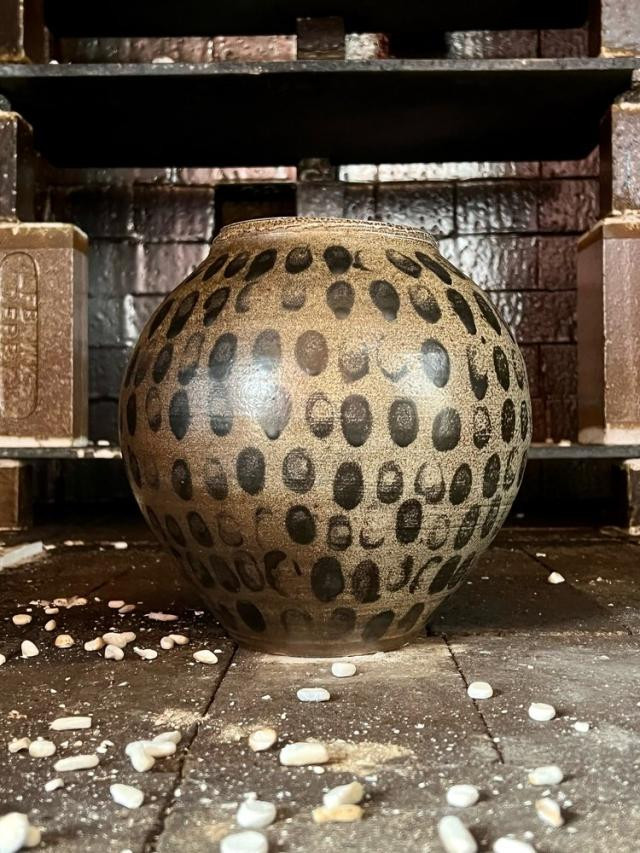
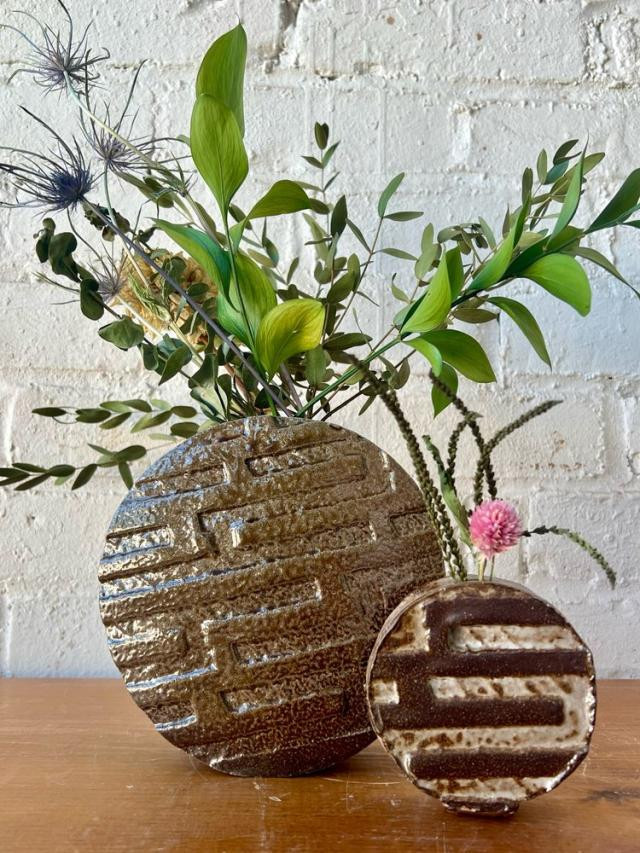
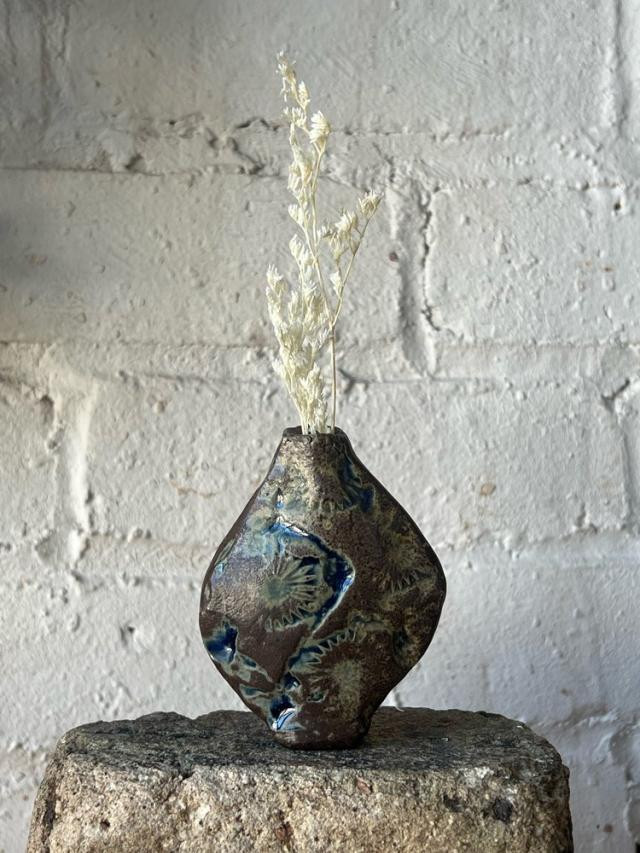
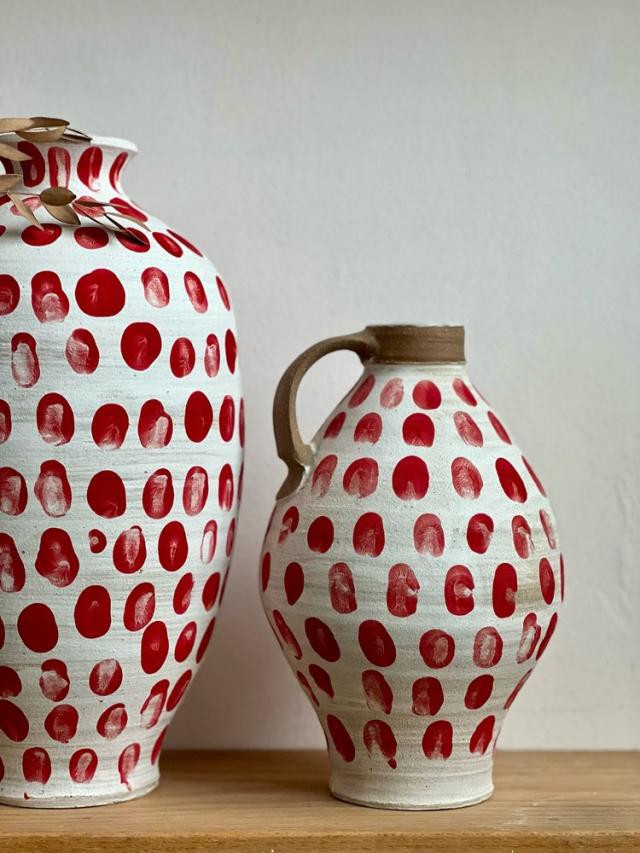
Photos courtesy of Lucas Mays



